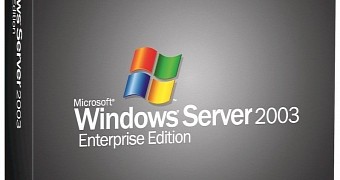After Windows XP, Microsoft is getting ready to push out another Windows operating system, as it struggles to encourage customers to upgrade to modern versions of its software.
Windows Server 2003 support will end on July 14, 2015, but statistics show that, despite the imminent deadline, more than 50 percent of the organizations are still running this aging platform on their computers.
These figures are a little worrying, not only for Microsoft and the organizations still running Windows Server 2003 on their systems but also for users worldwide, as the approaching end of support date concerns a server platform that could lead to addition exploits aimed at services or software hosted on these computers.
As was the case with Windows XP, Microsoft points to a study conducted by Spiceworks to show that 59.8 percent of the organizations in the Asia Pacific region are still running Windows Server 2003 on their computers, which represents a drop of only 5 percent in the last 10 months.
What’s more, the tech giant says, since January 2014, a total of 47 security vulnerabilities affecting Windows Server 2003 alone have been confirmed by its security engineers, which does nothing more than to confirm that, without patches, servers could really become easy to exploit.
Microsoft: You need to upgrade and you need to do it now!
Redmond turns to the very same tactics to convince customers to upgrade, pointing to the security risks of staying with an unsupported platform as the main reason everyone should switch to a newer Windows Server version.
“IT demands have changed dramatically since the launch of Windows Server 2003 more than 11 years ago. IT leaders across all industries are now managing an infrastructure that demands support for cloud, mobility, social and data-intensive applications. In addition, the increasing security and privacy threats are pressuring businesses of all sizes to transform in this new mobile-first, cloud-first world. All of which cannot be met with old technology platforms,” Arun Ulag, General Manager, Cloud & Enterprise, Microsoft Asia Pacific, said.
In Windows XP’s case, this strategy wasn’t entirely effective, as the 14-year-old operating system is still powering some 13 percent of PCs worldwide, despite the April 2014 end of support.

 14 DAY TRIAL //
14 DAY TRIAL //